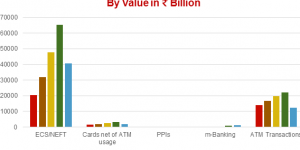By S. S. Mundra, Deputy Governor, RBI
With a view to strengthen the reach and scope of credit delivery mechanism for small entrepreneurs and businesses, RBI has recently issued in-principle approvals for setting up of 10 Small Finance Banks (SFBs). The SFBs are mandated to extend 75 per cent of their Adjusted Net Bank Credit (ANBC) to the sectors eligible for classification as priority sector lending (PSL) by RBI. Further, these banks are also mandated to ensure that at least 50 per cent of their loan portfolio should constitute of loans and advances of up to Rs.25 lakh. This is intended to ensure that these SFBs have a diversified loan book with exposures to small entrepreneurs. We believe that together with the existing players, these banks would be able to meet the credit needs of small businesses in a holistic and timely manner, which is so central to the financing needs of the MSMEs.
The recent revision to the priority sector lending guidelines has also sought to facilitate flow of credit to the sector. While on the one hand, the target for banks? lending to micro enterprises has been progressively increased to 7 percent by March 2016 and 7.5 percent by March 2017, medium enterprises have been brought within the ambit of priority sector, whereby all loans to medium enterprises in the manufacturing sector and those up to Rs. 10 crore in the service sector now qualify for priority sector classification.
An extremely important, but relatively much less appreciated aspect of credit delivery system is the availability of trained human capital within the banks. Bankers ought to have a sound understanding of the businesses that they finance. In respect of established businesses with predictable cash flows, conducting a credit appraisal, developing a proper understanding of the business cycle and analyzing problems is a lot easier when compared to small businesses, which often do not follow a set business cycle, are too dependent on idiosyncratic events and where promoters are not in a position to bring additional equity quickly. In this decade of retirements for the PSBs, the number of trained personnel has been dwindling very fast while the relatively inexperienced bottom rung does not possess appropriate skill-sets to lend to the MSME sector, which is perceived to be risky and costlier to service.
To overcome this human resource deficit in the banking sector, we at the Reserve Bank of India have embarked upon a fairly ambitious national level skill building programme for the bankers titled National Mission for Capacity Building of Bankers for Financing MSME Sector (NAMCABS) in July 2015. A major facet of the NAMCABS initiative is ?Training the trainer?, which is intended to serve as a force- multiplier. I am happy to state that close to 1800 bankers have undergone an intensive entrepreneurial sensitivity and skill building programme in the last 8 months. I would like to re-emphasize the ?Entrepreneurial sensitivity? content of the capacity building efforts, as this is the key to responding to the lifecycle needs of the small and medium enterprises.
Of course, the banking system needs to walk a fair bit to create an environment where an aspiring entrepreneur is more worried about embracing technology, improving productivity and efficiency at his/her unit rather than worrying about the availability, timeliness and adequacy of finance. This would require more enablers in the nature of a more robust and responsive financial infrastructure.








